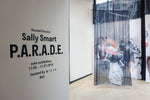
P.A.R.A.D.E. – SALLY SMART
, by Biasa Group, 1 min reading time

, by Biasa Group, 1 min reading time

Enjoy 10% off your first purchase and be the first to receive exclusive offers, event invitations, thoughtful updates, and timeless style inspiration.